The village divided by a border
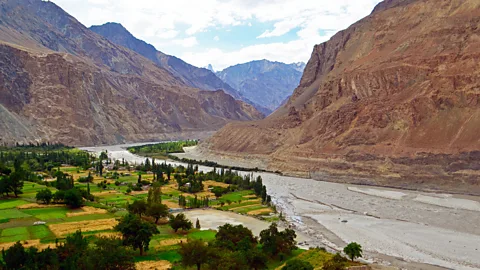
Without social media or mobile phones, estranged family members exchange recorded video messages on flash drives, sent by post.
When the first tourist arrived in Turtuk, a tiny farming village nestled between snow-topped mountains in India’s far northwestern region of Ladakh, he was greeted with baskets of ripe apricots, shimmering silk scarves and a choreographed folk dance.
The year was 2010.
“At that time, everyone was very much happy,” remembered Ismail Khan, 35, proprietor of Ismail’s Homestay, one of the 20 or so accommodations that now fill the once-isolated village. “It was the first time we had seen a foreigner.”
Claimed by Pakistan after the end of British rule in 1947, Turtuk was annexed to India in 1971 during the Indo-Pakistani war, when the province of Baltistan was partitioned between the two countries. As a military border, it remained closed to outsiders – even other Indians – until locals, weary of their long isolation, petitioned for the remote, scenic valley to open up.
As curious visitors, drawn by Turtuk's geopolitical allure, began to trickle in, they found themselves in one of India’s last rural idylls.
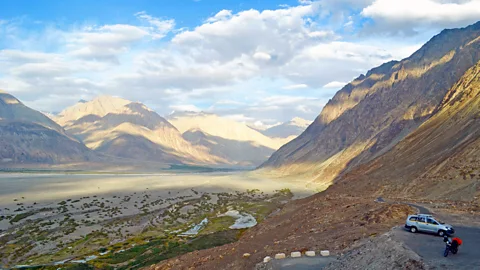 Ariel Sophia Bardi
Ariel Sophia BardiFor years, Turtuk was kept secluded not only by the government, but by its uniquely imposing geography: cradled by the Karakoram mountains, it’s a hard, un-shaded trek from surrounding villages. Yet the predominantly Muslim province of Baltistan – an anomaly within mostly Buddhist Ladakh – once served as an important gateway to the Silk Road, the ancient trading route that connected India with China, Persia and Rome. The mixed backgrounds of Turtuk's villagers, who are of Tibetan and Indo-Aryan descent, speak to Baltistan’s once important role as a connector of goods, cultures and people.
Today, with no wifi, few businesses, limited electricity and a distinct local language (Balti), the largely self-sufficient border village retains the feel of another age.
I was determined to see Turtuk for myself – no small feat, considering the full day journey from Leh, Ladakh’s major city, includes a vertiginous climb over Khardung La, the world’s highest motorable pass at 18,379ft.
My shared jeep descended rock-strewn roadways, the mountain glaciers turning into flat, white desert. Craggy mountains, marbled with purples and greens, protruded from vast dunes. Passes were so narrow that our car lost a side mirror when another vehicle streaked by.
A final leg of sandy road hugged the roiling Shyok River (literally Death River in Uyghur, named in the Silk Road-era) all the way to Turtuk. Just a few miles down the same road lies the border with Pakistan.
Carsick and besieged by thirst, I arrived awash with relief.
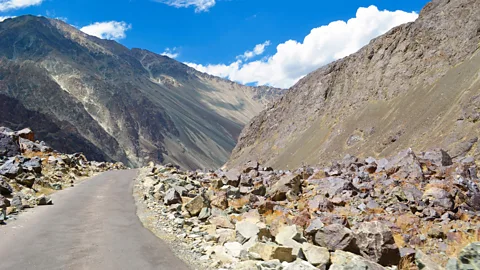 Ariel Sophia Bardi
Ariel Sophia BardiIt was not hard to feel instantly enamoured with the picturesque village. The Karakoram mountain range, home to K2, the world’s second-tallest peak, hovered over Turtuk’s 300 or so stone houses, as surreal as a painted backdrop. Mustard-yellow barley fields glowed under the late afternoon sun.
At Ismail’s restaurant, a short walk from his homestay down a knot of narrow footpaths, I replenished with chapattis and ginger tea. A little girl in a charcoal-coloured hijab called me over. Carrying fruit in the folds of her kurta, she gestured for me to take my pick. I bit into a fleshy, sugar-sweet apricot, breaking into a genuine grin. It was deliriously tasty.
“Have more!” she shrieked, seeing my smile. I asked where she had collected them. “Come,” an older girl replied. “We will show you.”
I followed them outside, panting up an old stone staircase flooded with water from the glacial runoff that irrigates the village. Tall, spiky trees shaded the path. Soon, the steps gave way to a flat, verdant field. At this height, we seemed almost level with the adjacent mountain range.
The girls, tiptoeing across a crumbling stone wall, reached with both hands into the treetops.
“Here!” they cried, clutching armfuls of pale yellow fruit. “Take more! Take more!” I asked if I could help gather apricots. They waved me aside. “It’s too dangerous for you,” the little one chided.
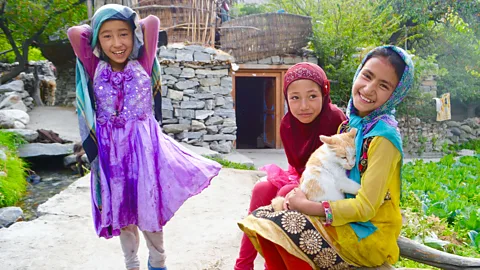 Ariel Sophia Bardi
Ariel Sophia BardiBalti hospitality is the stuff of legend, which I saw again when altitude sickness hit on my second day – a lingering effect of Khardung La, no doubt. Ismail and his nephew snuck me into an army hospital in a military buffer zone closer to the border, which is usually off-limits to tourists. For 10 hours, they remained smiling while the doctor, clad in olive fatigues, administered three IVs.
When I recovered over yak butter tea, I asked Abdul Kareem Hashamt, 65, one of the village elders, how Turtuk first came under Indian control. Hashamt became a math teacher in Turtuk's first primary school in the 1970s after India introduced roads and schools.
“At first, people were a little bit scared of India,” he told me. But Colonel Rinchen, the Indian Army officer leading the campaign, who hailed from a nearby village in Ladakh, said, “Don’t be afraid. We are with you. We’re all human beings.”
Women and children sought refuge in Turtuk's mosque, while the men whispered negotiations.
“After the colonel talked to them they were very happy,” Hashamt said. “They put on dance shows for the soldiers to welcome them and presented them with crates of fresh apricots.”
It was probably one of the softest conquests in history.
However, villagers studying or working in Pakistan before 1971 remained stuck there after Turtuk became part of India. While their relatives became Indians, they remained Pakistanis. The Indian government has now made it possible for villagers to visit from Pakistan, but only with a lot of expense and paperwork.
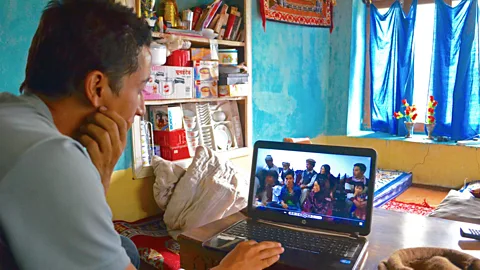 Ariel Sophia Bardi
Ariel Sophia BardiWithout social media or mobile phones, estranged family members exchange recorded video messages on flash drives, sent by post. Hashamt’s college-aged son, Ishmael, played me one on his laptop that he had shot for a local family.
“I’m fine. A little bit sick,” an old man with long white beard and beige woollen cap said onscreen. “We remember you in our dreams. In every moment.”
Last year, Ishmael's own uncle visited Turtuk for the first time in 43 years. I watched footage of the reunion with his mother, who was stooped over her cane in tears. Both gripped each other fiercely.
Ishmael looked reflective. “It’s not good, a lot of relatives who live on the other side,” he said. “I can’t explain to you, what’s the feeling of it.”
Before modern borders, Baltistan was a separate kingdom. Until the 16th Century, monarchs from Turkistan ruled over the united province under the Yagbo dynasty, a Central Asian empire whose reign, lasting from 800 to 1800AD, saw a flourishing of poetry and arts. Their former summer home now serves as Turtuk’s only museum, cataloguing eclectic relics like an antique snow leopard trap and a lapis lazuli-encrusted sword.
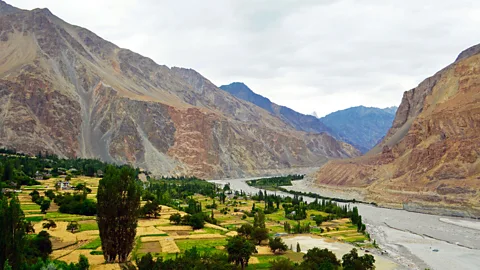 Ariel Sophia Bardi
Ariel Sophia BardiMany descendants of the royal clan still call Turtuk home. On my last afternoon, the dynasty’s youngest heir, 17-year-old Shahnavaz Hassan Khan, gave me a tour of the museum grounds. Flanked by artefacts, dressed in a muscle tee and denim cargo shorts, Khan cut an incongruously modern figure.
Like many younger villagers, he is pleased that, 45 years after joining India, Turtuk has become even more globally connected.
“People are coming from all different countries,” Khan said. Before, villagers “didn’t travel. They weren’t seeing any new things.”
The opening of Turtuk to tourists has surely influenced local culture. But as a Muslim village, in a Buddhist region, within a majority-Hindu country, Turtuk’s mixed ancestry already spanned borders.
If you liked this story, sign up for the weekly bbc.com features newsletter, called “If You Only Read 6 Things This Week”. A handpicked selection of stories from BBC Future, Earth, Culture, Capital, Travel and Autos, delivered to your inbox every Friday.
